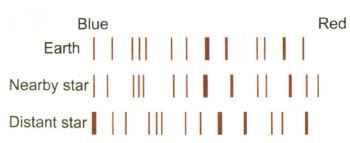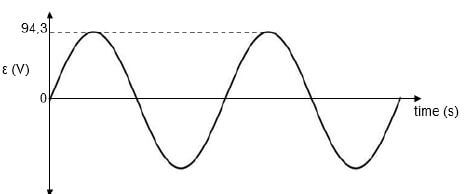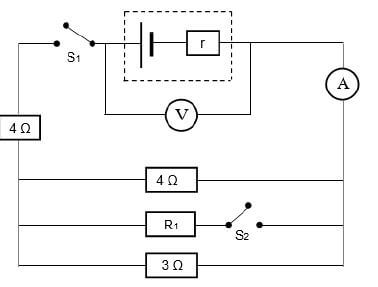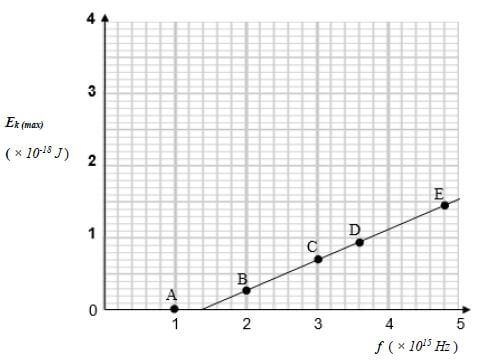PHYSICAL SCIENCES GRADE 12 PAPER 1 QUESTIONS - NSC PAST PAPERS AND MEMOS SEPTEMBER 2017
Share via Whatsapp Join our WhatsApp Group Join our Telegram GroupPHYSICAL SCIENCES
GRADE 12
PAPER 1
NSC PAST PAPERS AND MEMOS
SEPTEMBER 2017
INSTRUCTIONS AND INFORMATION
- Write your NAME in the appropriate space on the ANSWER BOOK.
- Answer ALL the questions.
- Non-programmable calculators may be used.
- Appropriate mathematical instruments may be used.
- Number the questions correctly according to the numbering system used in this question paper.
- You are advised to use the attached DATA SHEETS.
- The formulae and substitutions must be shown in ALL calculations.
- Give brief motivations, discussions, et cetera where required.
- Round off your final numerical answers to a minimum of TWO decimal places.
- Start EACH question on a NEW page.
- All diagrams are not necessarily drawn according to scale.
QUESTIONS
QUESTION 1 MULTIPLE-CHOICE QUESTIONS
Four possible options are provided as answers to the following questions. Each question has only ONE correct answer. Choose the best answer and write down A, B, C or D next to the question number (1.1–1.10) on your ANSWER BOOK.
1.1 Which ONE of the following is a conservative force?
- Normal force
- Frictional force
- Applied force
- Gravitational force (2)
1.2 Two objects experience an ELASTIC collision in a closed system. Which ONE of the following combinations regarding the momentum and kinetic energy is correct? (2)
Momentum is … | Kinetic energy is … | |
A | not conserved | conserved |
B | conserved | not conserved |
C | not conserved | not conserved |
D | conserved | conserved |
1.3 Two identical charges Q1 and Q2 are placed a distance r apart. The charges experience an electrostatic force F.
When the distance is …, then the force changes to 4F. Which ONE of the following changes in r will produce a force 4F? (2)
Original distance | New distance | |
| A | r | 3r |
| B | r | ¼r |
| C | r | ½r |
| D | r | r |
1.4 In the circuit below bulbs X and Y have resistances R and 3R respectively.
If the potential difference across Y is V, what is the voltmeter reading across the battery?
- 2 V
- V
- ¼V
- ½V (2)
1.5 The diagram below shows light incident on the cathode of a photocell. The ammeter registers a ZERO reading.
The intensity of the incident light is now increased. Which ONE of the following correctly describes the relationship between the intensity of the incident light and the ammeter reading? (2)
INTENSITY | AMMETER READING | |
A | Increases | Increases |
B | Increases | Remains the same |
C | Increases | Decreases |
D | Decreases | Increases |
1.6 A ball is kicked and moves up a frictionless, inclined plane and reaches point A at the top as shown in the diagram below.
One of the free-body diagrams below shows all forces acting on the ball. The diagrams are not drawn to scale. (2)
A | B |
C | D |
1.7 An airbag can protect a driver from serious injury during a collision. This is because as the time of impact …
- increases, the net force will decrease.
- decreases, the net force will decrease.
- increases, the net force will increase.
- decrease, the net force will remain the same. (2)
1.8 The graph below shows the relationship between maximum kinetic energy (Kmax) of the photoelectrons and frequency of incident photons during an experiment on the photoelectric effect.
The point labelled P on the graph represents the …
- maximum velocity.
- maximum frequency.
- threshold frequency.
- work function. (2)
1.9 An observer moves away from a stationary source. The pitch heard by the observer appears to change because the …
- loudness of the source appears to increase.
- frequency of the source appears to increase.
- frequency of the source appears to decrease.
- wavelength of the source appears to decrease. (2)
1.10 The sketch below represents an alternating current (AC) generator. Which ONE of the following is correct about an AC generator? (2)
The AC generator converts … | Type of ring used | |
A | mechanical energy to electrical energy. | Slip rings |
B | electrical energy to mechanical energy. | Split-ring commutator |
C | electrical energy to mechanical energy. | Slip rings |
D | mechanical energy to electrical energy. | Split-ring commutator |
[20]
QUESTION 2 (Start on a NEW page.)
A 5 kg block, resting on a rough horizontal table, is connected to a 12 kg block by a light inextensible string that passes over a light frictionless pulley. A 5 N force is applied to the 5 kg block at 30° to the horizontal as shown in the diagram below.
2.1 Write down Newton’s Second Law of motion in words. (2)
2.2 Draw a free-body diagram of all forces acting on the 5 kg block. (5)
2.3 The coefficient of kinetic friction (µk) between the 5 kg block and the surface is 0,2.
Use Newton’s Laws to calculate the magnitude of the:
2.3.1 Normal force acting on the 5 kg block (3)
2.3.2 Kinetic frictional force acting on the 5 kg block (2)
2.3.3 Acceleration of the 5 kg block (4) [16]
QUESTION 3 (Start on a NEW page.)
A stone is projected vertically upwards from point A, which is 1,8 m above the base of the building with a speed of 15 m•s-1. The stone strikes the roof of the building at point X, 2,4 s after it was projected. Ignore the effects of air friction.
3.1 Define the term free-fall. (2)
3.2 Calculate the:
3.2.1 Time taken by the stone to reach the maximum height at Y (3)
3.2.2 Speed at which the stone hits the roof of the building (4)
3.3 Calculate the height of the building. (6)
3.4 Sketch the velocity-time graph for the motion of the ball from the time it was projected until it hits the top of the building.
Indicate the following on your graph:
- Initial velocity
- Time at Y, the maximum height
- Final velocity at X, the roof of the building (3) [18]
QUESTION 4 (Start on a NEW page.)
A 4 kg box at point A above the horizontal is released and slides down 7 m from A to C on an incline plane. The inclined plane from point A to B which is 3 m is frictionless whilst the plane from B to C is rough as shown in the diagram. The diagram is not drawn to scale.
4.1 State the principle of Conservation of Mechanical energy in words. (2)
4.2 Calculate the speed of the box at position B. (4)
4.3 The box experiences a constant kinetic frictional force of 13,6 N as it moves down from B to C.
4.3.1 State the Work-Energy Theorem in words. (2)
4.3.2 Draw a free-body diagram showing ALL forces acting on the box while moving from B to C. (3)
4.3.3 Use the energy principles to calculate the kinetic frictional force between B and C if the speed of the box at position C, the bottom of the plane is 3 m•s-1. (5)
4.4 The angle between the incline and the horizontal is decreased. How will this affect the coefficient of kinetic friction acting on the box?
Write only INCREASE; DECREASE or REMAIN THE SAME. (1) [17]
QUESTION 5 (Start on a NEW page.)
A 5 g steel marble is fired horizontally to the east from a 2 kg model canon that is stationary on a flat frictionless horizontal surface. The canon is placed 0,32 m from a fixed barrier.
At the instant the steel marble leaves the canon, the canon starts moving backwards (recoils) at a constant velocity.
5.1 State the Principle of Conservation of Linear Momentum in words. (2)
5.2 After firing, the canon takes 0,33 s to collide with a barrier at a distance of 0,32 m.
Calculate the speed at which the:
5.2.1 Canon collides the barrier (3)
5.2.2 Steel marble is fired from the canon (4)
5.3 The canon bounces back from a barrier at a speed of 0,4 m.s-1.
Calculate the magnitude of the impulse by the barrier on the cannon. (3) [12]
QUESTION 6 (Start on a NEW page.)
An ambulance moves away from an accident scene at a constant speed with its siren producing sound waves at a frequency of 890 Hz. A detector at the scene measures 90% of the frequency of sound waves produced by the siren as the ambulance moves away.
6.1 What phenomenon is being described above? (1)
6.2 Explain, in terms of wave motion, why the detector measures 90% of the frequency of sound waves emitted by the ambulance. (2)
Assume that the speed of sound in air is 340 m•s-1.
6.3 Calculate the speed of the ambulance. (5)
6.4 What is the use of the Doppler flow meter in the medical field? (1)
6.5 The diagram below shows spectral lines for a nearby star and a distant star as observed from Earth. 
6.5.1 Is the nearby star moving towards or away from Earth? (1)
6.5.2 Compare the motion of the nearby star and the distant star as observed from Earth. Which ONE of them is moving faster? (2) [12]
QUESTION 7 (Start on a NEW page.)
Two metal spheres, J and L placed on wooden stands, carry charges +3 μC and +2 μC respectively. The diagram is not drawn according to scale. 
7.1 State Coulomb’s Law in words. (2)
7.2 Calculate the electrostatic force experienced by sphere L as a result of sphere J. (4)
7.3 Sphere L is now placed 12 cm away from sphere J. Another sphere M with a charge of -8 μC is brought into contact with sphere L. After contact, sphere M is placed on a wooden stand P, 8 cm from sphere L, as shown in the diagram. 
7.3.1 What is the charge (Q) of sphere M after contact with sphere L? (1)
7.3.2 Calculate the number of electrons transferred between sphere L and sphere M after contact. (3)
7.3.3 Draw the electric field pattern due to the charge of sphere J and sphere L after contact. (3)
7.4 Calculate the net electric field strength on sphere L due to sphere J and sphere M after contact. (6) [19]
QUESTION 8 (Start on a NEW page.)
8.1 An alternating current (AC) generator installed on a farm produces the following graph of emf against time. The root mean square current for the generator is 3% of the root mean square voltage. 
8.1.1 What does 94,3 V on the graph represent? (1)
8.1.2 Calculate the average power for this generator. (4)
8.1.3 What alterations must be made to the above AC generator in order to convert it to a DC generator? (2)
8.2 A search light with an ohmic light bulb is rated 90 V and 56 W.
8.2.1 Calculate the resistance of the light bulb. (4)
The search light is now connected to the AC generator described in QUESTION 8.1 above.
8.2.2 Describe how the brightness of the light bulb will now change. Choose from TOO BRIGHT, CORRECT BRIGHTNESS or TOO DIM. Explain your answer. (2) [13]
QUESTION 9 (Start on a NEW page.)
A battery is connected in a circuit as shown in the diagram below. When switch S1 is open, the current does not flow and the voltmeter reading V records 22,14 V. 
9.1 Write down the term that describes the voltmeter reading when switch S1 is open. (1)
9.2 When both switches are closed, the voltmeter reading decreases to 21,24 V and the ammeter reads 4,5 A.
Calculate the:
9.2.1 Internal resistance of the battery (4)
9.2.2 Effective resistance of the parallel connection (6)
9.3 Name ONE factor that can cause the readings to change. (1)
9.4 Switch S2 is now opened.
Will the voltmeter reading INCREASE, DECREASE or STAY THE SAME? (1) [13]
QUESTION 10 (Start on a NEW page.)
A group of scientists perform an investigation by shining five different light sources A, B, C, D and E of different wavelengths onto a platinum metal surface. They measure the maximum kinetic energies of the ejected photoelectrons and produce the graph as shown below. 
10.1 Define the work function of a metal. (2)
10.2 Use information from the graph to calculate the work function of the platinum metal. (3)
10.3 How is the number of the ejected electrons affected:
(Choose from INCREASE; DECREASE or REMAINS THE SAME.)
10.3.1 If the intensity of light source A is increased (1)
10.3.2 When light source B is used instead of light source A (1)
10.4 Calculate the speed of an ejected electron when light source C is shone on the platinum metal. (3) [10]
TOTAL: 150
DATA FOR PHYSICAL SCIENCES GRADE 12
PAPER 1 (PHYSICS)
TABLE 1: PHYSICAL CONSTANTS
NAME | SYMBOL | VALUE |
Acceleration due to gravity | g | 9,8 m•s-2 |
Universal gravitational constant | G | 6,67 × 10-11 N•m2•kg-2 |
Speed of light in a vacuum | c | 3,0 × 108 m•s-1 |
Planck's constant | h | 6,63 × 10-34 J•s |
Coulomb's constant | k | 9,0 × 109 N•m2•C-2 |
Charge on electron | e | -1,6 × 10-19 C |
Electron mass | me | 9,11 × 10-31 kg |
Mass of earth | M | 5,98 × 1024 kg |
Radius of earth | RE | 6,38 × 103 km |
TABLE 2: FORMULAE
MOTION
| vf = vi + aΔt | Δx = ViΔt + ½aΔt2 or Δy = ViΔt2 + ½aΔt2 |
Vf2 = Vi2 + 2aΔx or Vf2 = vi2 + 2aΔy | Δx = [Vi + Vf]Δt or Δy = [Vi + Vf]Δt |
FORCE
Fnet = ma | p= mv |
fsmax = µsN | fk = µkN |
FnetΔt = Δp | w =mg |
F = Gm1m2 | g = G M |
WORK, ENERGY AND POWER
W =FΔxcosθ | U= mgh or EP = mgh |
K = ½mv2 or Ek = ½mv2 | Wnet = ΔK or Wnet = ΔEk ΔK = Kf −Ki or ΔEk =Ekf − Eki |
Wnc= ΔK + ΔU or Wnc= ΔEk + ΔEp | P = W Δt |
Pav = Fv |
WAVES, SOUND AND LIGHT
v = f λ | T =1/f |
fl = v ± vl fs fl = v ± vl fb | E = hf or E = h c |
E = W0 + Ek where | |
ELECTROSTATICS
| F = kQ1Q2 r2 | E = KQ |
E = V | E = F |
V = W | n = Q |
ELECTRIC CIRCUITS
R = V | emf (ε) = I(R + r) |
RS = R1 + R2 + ....... | q = I Δt |
W = Vq | P= W |
ALTERNATING CURRENT
I rms = Imax | Paverage = VrmsIrms |